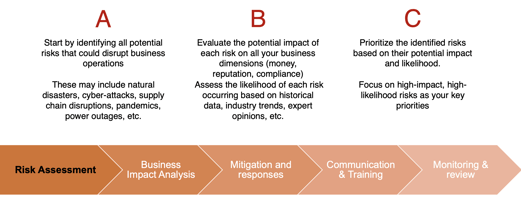The art of network design for Pharmaceutical Supply Chain
In today's globalized economy, Supply Chain management has become increasingly complex. As companies strive to stay competitive, they need to optimize their Supply Chain to reduce costs, increase efficiency, and improve customer satisfaction while ensuring Quality and Conformity. One critical aspect of Supply Chain management is network design. A well-designed network can make all the difference in achieving these goals.
But wait, what is actually network design? To put it simply, it is the art of identifying how to operate. Meaning, where do I produce? Where do I store? What to externalize or to internalize?
This article explore the art of Supply Chain network design through four sections:
- Key structuring dimensions
- Finding the optimum, what is traditionally considered in the balance?
- New key considerations playing a central role such as Supply Chain Resilience and sustainability
- How to actually do it?

1. Key structuring dimensions
Several elements play an essential role when designing a Supply Chain. To best determine the optimal number and location of Supply Chain facilities, one must start by carefully considering and analyzing the following key factors.
-
Stability and macroeconomics
Obvious but still fundamental: the stability of a region or country is the first dimension to consider when designing a Supply Chain. Regions with stable political and economic conditions offer predictable environment for operations.
Macroeconomic factors, such as inflation rates, exchange rates, interest rates, and employment market provide key inputs in the mapping of any Supply Chain.
-
Taxes
Taxes play a significant role in Supply Chain design as they can significantly impact a company's bottom line. Different countries have different tax policies, and companies must consider these when designing their network. Key considerations are related to Corporate Income Taxes and VAT.
-
Regulatory Requirements
When it comes to the Pharmaceutical industry, Regulatory considerations are crucial in Supply Chain design. Ensuring patients safety is an impartial pre-requisite. Licences being for manufacturing or distributing a product play a major role. Strategies need to be developed to ensure distribution in all relevant country while maintaining reasonable cost especially related to Quality requirements and their associated organization.
-
Manufacturing Constraints
Manufacturing know-how considerations is another crucial factor in Supply Chain network design. It involves identifying the capabilities and limitations of each country/region. Very often, this is first related to the quality of the training and education. This dimension must also consider the sourcing of all the elements of a given product.
-
Demand
Considering demand is the last critical element in Supply Chain network design. Companies need to align their capabilities with their customers' needs to ensure they can meet demand while minimizing inventory costs. Analyzing demand variability and lead times is crucial in determining the optimal number and location of facilities in the Supply Chain network.
2. Finding the optimum, what is traditionally considered in the balance?
Cost, quality, and speed are the three key factors that one must balance to traditionally achieve optimal results. In the Pharmaceutical's Industry, Quality should always be an unquestionable pre-requisite.
To achieve the right balance, companies need to carefully consider the key elements of their Supply Chain network. First with the macro considerations listed under the first point of this article. Then by analyzing factors such as labor costs, inventory levels, transportation costs, demand variability, and lead times. By finding the optimal balance between these factors, companies can reduce costs, increase efficiency, and improve customer satisfaction.
Inventory level is a critical element that is often at the center of the discussion. Holding high levels of inventory can ensure quick delivery times, but it can also increase carrying costs. On the other hand, keeping inventory levels low can reduce carrying costs, but it may impact delivery times.
Transportation cost is also a crucial factor in network design. Companies need to consider the cost of transportation for each facility and determine the optimal transportation mode for each product or material. This includes analyzing factors such as distance, weight, volume and temperature requirements. Companies need to find the most cost-effective transportation mode to optimize their Supply Chain network.
3. New key considerations playing a central role such as Supply Chain Resilience and sustainability
Nowadays, Supply Chain resilience and Sustainability cannot be overstated. As the world becomes increasingly aware of the impact of climate change and the need to reduce carbon emissions, companies must consider sustainability across their network.
In addition , companies must also consider resilience. Disruptions in the Supply Chain have significant impacts on a company's bottom line and have proven to be more and more frequent. Over the last year, Supply Chainers faced major challenges due to crisis such as volcanos, COVID, transportation disruptions and political instabilities. Companies must design their Supply Chain networks to be resilient in the face of unexpected events. This includes is often managed through risk analysis and contingency plans to mitigate them.
Overall, the new role of sustainability and resilience in Supply Chain design is essential to ensure long-term success. Companies that prioritize these factors in their network design can not only reduce costs and improve customer satisfaction but also contribute to a more sustainable and resilient global economy.
4. How to actually do it?
Designing a Supply Chain network is a complex process that requires careful consideration of several factors. To start, companies must gather data on macroeconomics, Regulatory requirements, manufacturing constraints, and demand. This data should be analyzed to determine the optimal number and location of facilities in the Supply Chain network.
To actually do a design network study, one can use several methods, including simulation, modeling, and optimization. These methods help companies understand the impact of different scenarios on their Supply Chain network and identify the optimal solution. Companies can also use software tools to streamline the process and ensure accuracy.
In summary, designing a Supply Chain network study requires careful consideration of several factors. Companies must find the right balance between cost, quality, and speed while considering resilience and sustainability factors. By using simulation, modeling, and optimization methods, companies can identify the optimal solution and ensure long-term success.
From here...
Visit our website to know more about our design network services
Set up a call to discuss with our expert:

.jpg?height=200&name=nastya-dulhiier-OKOOGO578eo-unsplash%20(1).jpg)

